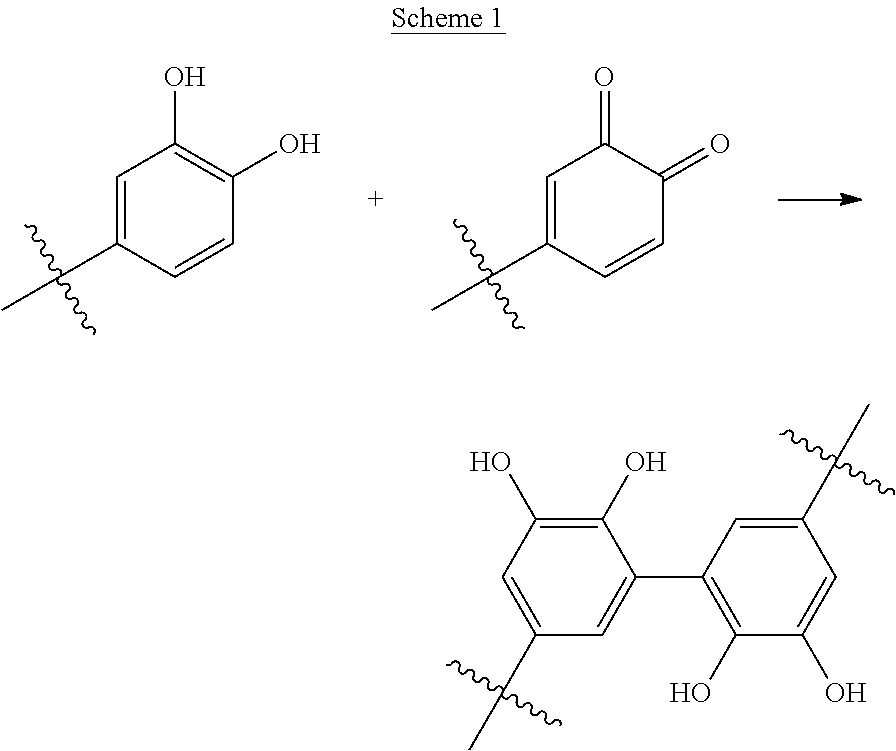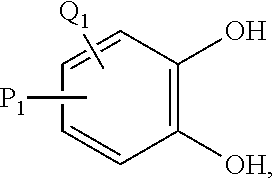Biomimetic adhesive compositions comprising a phenolic polymer and methods for use thereof
a technology of biomimetic and adhesive composition, which is applied in the field of adhesive compositions, can solve the problems of protein-derived biomaterials that may provide poor stability at elevated temperatures and/or in certain types of chemical environments, and protein molecules can present considerable synthetic and economic challenges
- Summary
- Abstract
- Description
- Claims
- Application Information
AI Technical Summary
Benefits of technology
Problems solved by technology
Method used
Image
Examples
Embodiment Construction
[0013]The present disclosure relates to adhesive compositions, and, more specifically, to biomimetic adhesive compositions and their use in a subterranean formation.
[0014]In the context of the present disclosure, we have discovered adhesive compositions that are biomimetic in nature and have been inspired by the bioadhesives produced by marine mussels. Marine mussel bioadhesives are polyphenolic proteins that are believed to be non-toxic and environmentally benign. Although the adhesion of marine mussels and other marine organisms to surfaces can be a nuisance in some cases (e.g., barnacle adhesion to ships), the strength and utility of the bioadhesive itself is not in doubt. Given the beneficial properties of bioadhesives, it would be desirable to apply like adhesive compositions in a non-biological setting, particularly in environments where traditional adhesives may be less adherent or have insufficient strength, such as in aqueous environments, including those encountered during...
PUM
| Property | Measurement | Unit |
|---|---|---|
| weight percent | aaaaa | aaaaa |
| weight percent | aaaaa | aaaaa |
| adhesive | aaaaa | aaaaa |
Abstract
Description
Claims
Application Information
 Login to View More
Login to View More - R&D
- Intellectual Property
- Life Sciences
- Materials
- Tech Scout
- Unparalleled Data Quality
- Higher Quality Content
- 60% Fewer Hallucinations
Browse by: Latest US Patents, China's latest patents, Technical Efficacy Thesaurus, Application Domain, Technology Topic, Popular Technical Reports.
© 2025 PatSnap. All rights reserved.Legal|Privacy policy|Modern Slavery Act Transparency Statement|Sitemap|About US| Contact US: help@patsnap.com



